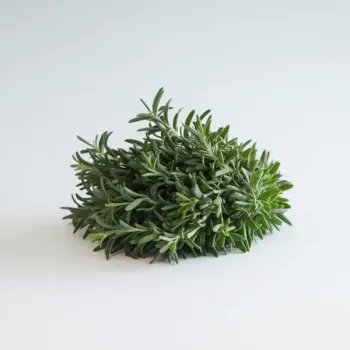Marjoram and thyme are aromatic herbs used in cooking. Marjoram has a sweet, citrusy flavor, while thyme offers a pungent, earthy taste. They enhance different dishes, with marjoram ideal for light recipes and thyme for heartier meals.

Marjoram is a fragrant herb from the mint family, known for its sweet, citrusy flavor with a hint of pine. It's a common ingredient in Mediterranean cuisine and pairs wonderfully with meats, vegetables, and sauces.

Thyme is a versatile herb with a more pungent, earthy taste. It's used widely in European cuisines, especially French, and is a key component in the bouquet garni and herbes de Provence. Thyme is great with poultry, soups, and stews.
While both herbs share a place in the mint family, marjoram tends to have a sweeter, milder taste compared to the stronger, more savory flavor of thyme. Marjoram's leaves are softer and more delicate, whereas thyme's are small and a bit tougher. Marjoram is often used fresh to preserve its subtle notes, while thyme can withstand longer cooking times, making it ideal for hearty dishes.

Your ultimate Recipe Box, Meal Planner, and Cooking Class all in one
In Mediterranean dishes such as Greek salads, marinated olives, or roasted lamb, marjoram adds a gentle warmth without overpowering the dish. Its sweet profile complements the fresh and vibrant flavors typical of this cuisine. Thyme, on the other hand, stands out in heartier Mediterranean recipes like ratatouille, bouillabaisse, or herbed breads. Its robust nature can handle slow-cooking and melds well with the rich and aromatic components.
Use marjoram as a finishing herb for lighter meats like chicken or turkey to introduce a delicate, floral hint that can brighten up the dish. Thyme holds its own in bolder meat dishes such as beef stew or lamb chops. Its strong flavor profile infuses the meat during cooking, providing a depth and complexity that marjoram cannot achieve in these types of recipes.
Marjoram is perfect for lighter soups and broths where its subtle sweetness can be a focal point without being overshadowed by other ingredients. For heartier stews and soups that simmer for hours, thyme is the go-to herb. It can withstand long cooking times and contributes a depth of flavor that marjoram cannot match in these dishes.
Both marjoram and thyme are low in calories and contain various vitamins and minerals, contributing to a healthy diet.
| Nutrient | Thyme ( per Teaspoon (dried) ) | Marjoram ( per Teaspoon (dried) ) |
|---|---|---|
| Fat | 0.01g | 0.01g |
| Sodium | 0.1mg | 0.12mg |
| Calcium | 7mg | 5mg |
| Protein | 0.05g | 0.04g |
| Calories | 1 | 1 |
| Carbohydrates | 0.2g | 0.24g |
Yes, but it's best in lighter dishes where marjoram's mild flavor can shine without being overshadowed by other ingredients.
Marjoram is better for a subtle, sweet flavor, while thyme is preferred for a more pronounced, savory note.
Fresh herbs often provide a more vibrant flavor, but dried herbs are more concentrated and better for dishes with longer cooking times.
A general rule is to use one-third the amount of dried herbs when substituting for fresh, due to their stronger flavor.
No, they are different herbs, though they belong to the same family and marjoram is often referred to as sweet marjoram or knotted marjoram.